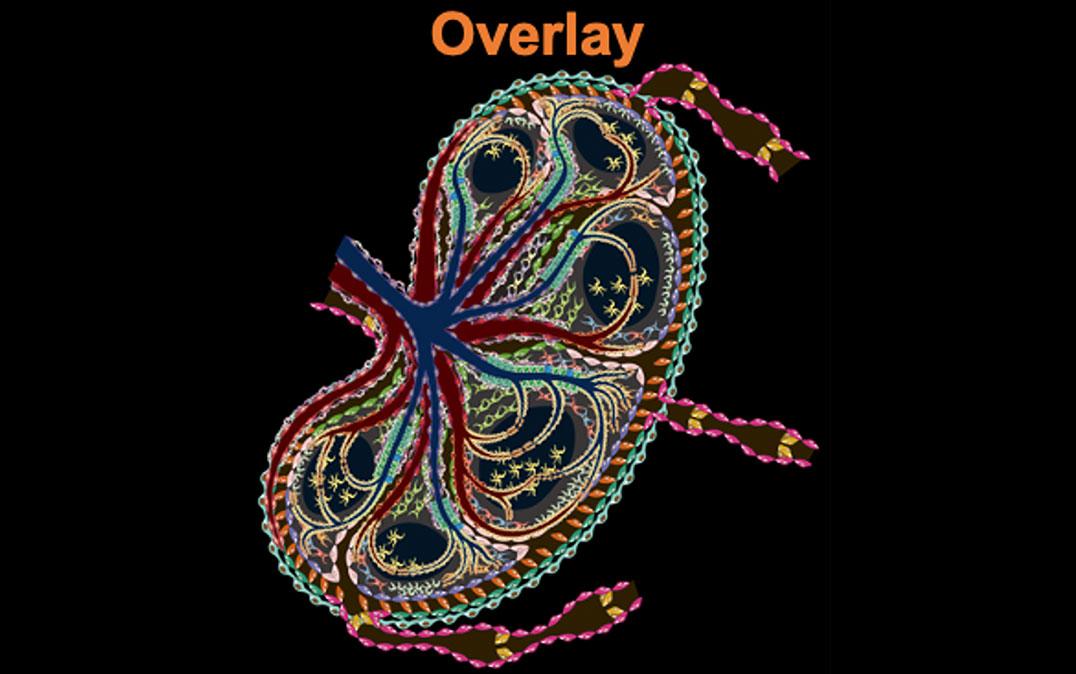Research News
[Nature Index Selection] All Cells Are Important: A Roadmap to Characterize Lymphoma Stroma (Research highlights in January 2023)
The Nature Index, a database site operated by Springer Nature, selects one research paper of the researchers belonging to the University of Tsukuba as a Research Highlight from 82 major journals every month. January 2023, it featured the above research.
Mapping cells involved in blood cancers
Nature Index: Profile page of the University of Tsukuba
Nature Index Research highlights: University of Tsukuba

Researchers from the University of Tsukuba identify gene expression signatures in different types of lymph nodes cells that play an active role in the development of lymphomas.
Tsukuba, Japan—Lymphomas are blood cancers that often start from lymph nodes. Lymph nodes contain not only hematopoietic cells, mainly B- and T-lymphoid cells, but also non-hematopoietic cells (NHCs), also called stromal cells. We know from previous research that NHCs have an active role in the development of lymphomas. However, it is still not clear how they promote the expansion and proliferation of lymphomas. Despite advancement in therapeutic options, most lymphomas remain uncurable.
In a paper published in Nature Cell Biology in March 2022, researchers from the University of Tsukuba constructed an atlas of more than 100,000 NHCs collected from 27 human samples, encompassing different types of lymphomas such as follicular lymphomas. The research team used single-cell RNA sequencing to profile the gene expression of the hundreds of thousands of NHCs. On the basis of this expression, the researchers divided them into different subgroups, called clusters, and discovered a significant heterogeneity of these cells. The researchers observed that this heterogeneity was detectable also in aggressive lymphomas, meaning that some of these subgroups could be involved in the progression of the tumor. They identified several subgroups of NHCs, including some that were previously unrecognized—for example, specific types of endothelial cells. "Once the atlas was developed, we performed differential gene expression analysis between subgroups in different types of lymph nodes affected by lymphoma," explains Professor Mamiko Sakata-Yanagimoto, lead author of the study, "and interestingly we found subcluster-specific transcriptional changes and a specific pattern of interaction with malignant cells in the stroma of follicular lymphomas." Follicular lymphomas are one of the most common types of lymphoma. Therefore, having a gene expression signature and a prediction of how NHCs can interact with malignant cells may be very useful to keep the tumor development under control, as they suggest potential biomarkers for therapeutic approaches.
Another important finding of the study suggested that human lymph nodes have unique NHC subpopulations that have not been previously detected in mouse lymph nodes. This highlights the importance of carrying out more human studies in the future.
Professor Mamiko Sakata-Yanagimoto summarized the contribution of this research by noting its potential for therapeutic applications globally: "This single-cell atlas of NHCs in human lymph nodes that we developed is applicable to lymphoma researchers all around the world. It can provide deep insights into lymphoma stromal biology and resources applicable to future studies on lymphomas, and also identify potential stroma-derived biomarkers that may serve as clinical indicators and/or therapeutic targets".
### This work was supported by Grants-in-Aid for Scientific Research (KAKENHI: JP20J20851 to Y.A., JP21H02945 to M.S.-Y., and JP19H03683 to S.C.) from the Ministry of Education, Culture, Sports, Science, and Technology of Japan; AMED under grant numbers JP21ck0106544 and JP21ck0106644 (to M.S.-Y.) and JP21cm0106505 (to S.C.); and Okinaka Memorial Institute for Medical Research, Foundation for Promotion of Cancer Research, and Takeda Science Foundation (to M.S.-Y.). The funders had no role in study design, data collection and analysis, decision to publish or preparation of the manuscript.
Original Paper
The article, "A single-cell atlas of non-hematopoietic cells in human lymph nodes and lymphoma reveals a landscape of stromal remodeling," was published in Nature Cell Biology at DOI: 10.1038/s41556-022-00866-3
Correspondence
Professor SAKATA-YANAGIMOTO Mamiko
Faculty of Medicine, University of Tsukuba



